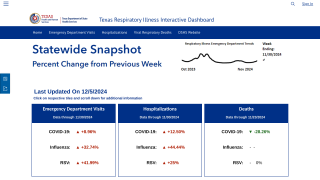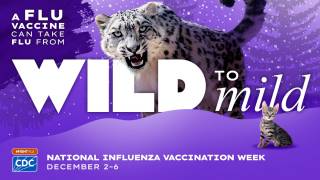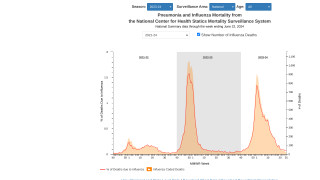When Should We Get Flu Shots This Year?

Since flu vaccines are most protective when the influenza season is intense, the timing of getting the annual vaccination is essential.
Unlike most flu seasons, predicting when the 2021-2022 flu season will reach the USA from the Southern Hemisphere is unknown, said the US Centers for Disease Control and Prevention (CDC) vaccine committee on June 24, 2021. The CDC recently reported influenza cases were lower this year than any flu season since 2005.
The CDC estimates the number of flu illnesses, medical visits, and hospitalization prevented depends on how protective vaccines are each year.
During the CDC’s Advisory Committee on Immunization Practices (ACIP) influenza presentation led by H. Keipp Talbot, M.D., MPH Chair, Influenza Work Group, developing a clear message regarding influenza vaccination timing is a top priority for 2021-2022.
The ACIP’s core message has not changed…. ‘Annual influenza vaccination is recommended for all persons aged six months and older who do not have contraindications,’ presented Lisa Grohskopf, M.D., MPH, Influenza Division, NCIRD, CDC.
And the ACIP confirmed what types of influenza vaccines would be available in the USA this flu season… ‘All vaccines expected for 2021-22 are quadrivalent (i.e., contain hemagglutinin derived from four viruses: one influenza A(H1N1), one influenza A(H3N2), one influenza B/Victoria and one influenza B/Yamagata.’
Most flu shots will be quadrivalent vaccine (99%) and thimerosal-free or reduced vaccine (87%). Additionally, about 20% will be egg-free.
Moreover, the question about COVID-19 and influenza vaccine coadministration was clarified on June 1, 2021... “COVID-19 vaccines were previously recommended to be administered alone, with a minimum interval of 14 days before or after administration of any other vaccines. This was out of an abundance of caution and not due to any known safety or immunogenicity concerns.’
‘However, actual data is now being collected regarding the safety of COVID-19 vaccine currently authorized by U.S. FDA for use under Emergency Use Authorizations…COVID-19 vaccines and other vaccines may now be administered without regard to timing.”
Furthermore, there should be ample flu shot availability this year since about 193 million influenza vaccines will be stocked by doctors, pharmacists, and nurses. Last flu season, 193.8 flu vaccines were distributed by vaccine manufacturers as of late February 2021.
This leads to the ‘when to get a flu shot during the 2021-2022 flu season’ question.
Over the past thirty-six flu seasons, peak influenza activity occurred around January and February, says the CDC.
Declines in influenza VE throughout each flu season have been noted in many observational studies. However, the influenza vaccine ‘waning’ appears to be more pronounced among older adults, and there is less evidence of waning among children.
The CDC’s proposed new language for children is a follows… “Children of any age who require only one flu shot for the season should ideally be vaccinated by the end of October; vaccination of these children may occur as soon as vaccines become available, as there is less evidence to suggest that early vaccination is associated with waning immunity among children as compared with adults.”
However, new reports from Southern Hemisphere countries indicate there is minimal detection of influenza viruses. The latest Pan American Health Organization (PAHO) report says, ‘Despite continued or even increased testing for influenza in some countries, influenza activity remained at lower levels than expected for this time of the year.’
In the temperate zone of the southern hemisphere, influenza activity remained at an inter-seasonal level. In Southern Asia, few influenza detections were reported from Bangladesh, India, Nepal, and Pakistan. And in Southeast Asia, no influenza detections were reported,’ said the PAHO report issued on June 23, 2021.
Furthermore, with the CDC discouraging international travel because of the ongoing COVID-19 pandemic, very few people are visiting the USA. The current US Transportation Security Agency data indicates overall travel volume remains about 30% less than pre-COVID-19 pandemic levels, which reduces the likelihood flu-infectious travelers will visit the USA during Fall 2021.
Since Dr. Grohskopf and the other ACIP members did not recommend modifying the current ‘when to get a flu shot guidance,’ the group suggested everyone rely on the U.S. influenza surveillance system to determine when and where influenza activity is occurring.
This system is a collaborative effort between CDC and its many partners in state and local health departments, public health and clinical laboratories, vital statistics offices, healthcare providers, clinics, and emergency departments.
For more information about CDC’s influenza surveillance activities, see the Overview of Influenza Surveillance in the United States.
PrecisionVaccination publishes research-based vaccine news.
Note: this article was updated for content style.
Our Trust Standards: Medical Advisory Committee

























